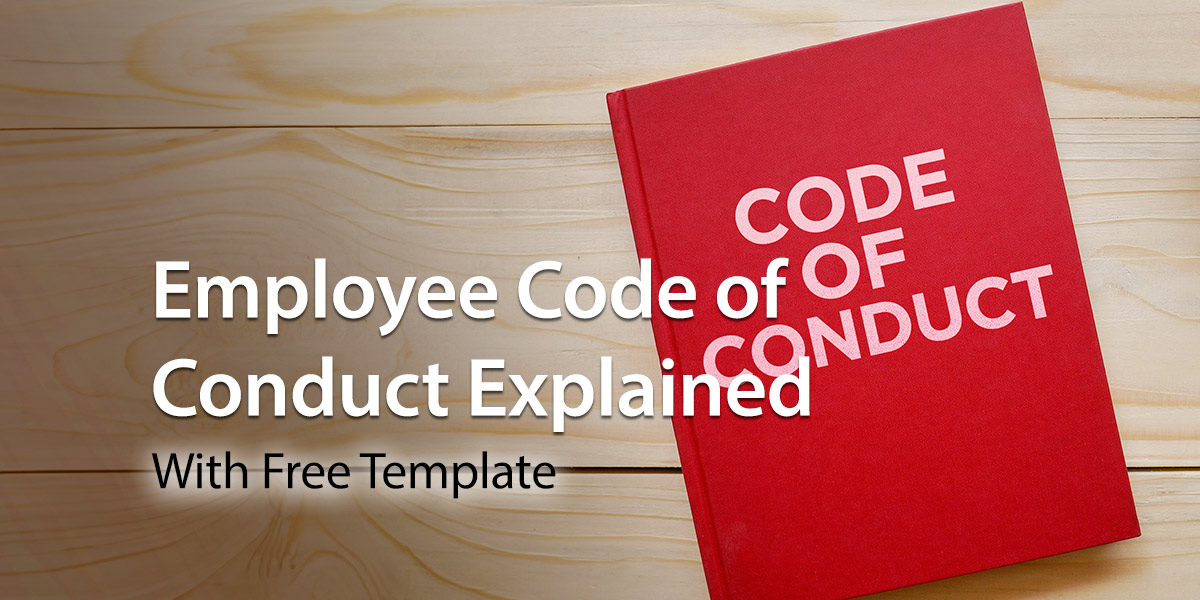If you’ve been appointed meeting minutes note taker, you may be feeling the pressure. There’s so much information and discussion to record, and you want to do your best, right? The good news is that writing effective meeting minutes doesn’t have to be an arduous task. Whether keeping an official record of the board meeting or creating team meeting notes, our best practice tips ensure success as a note taker. And to make your task even easier, we include a minutes template for the most common meetings. All you need to do is download and adapt to create effective meeting minutes every time.
Ready to get started? Let’s get back to basics by exploring what meeting minutes are all about.
What Are Meeting Minutes?
Meeting minutes are a written record of what happened at a meeting. Minutes record motions, decisions, key discussions, action items, and next steps.
They are used in formal settings like board meetings. However, they are also helpful for project meetings, cross-departmental collaborations, and even team meetings.
Why Are Meeting Minutes Important?
Formal meeting minutes have several purposes, including the following:
- They are an official record of a group’s decisions and discussions. In the context of board meetings, they can offer legal protection against challenges and confirm due diligence when making decisions.
- Meeting notes are a reminder for participants of actions and next steps.
- They confirm deadlines and tasks assigned for future reference.
- Meeting minutes are helpful summaries of the key points for anyone absent.
How Do I Write Minutes Of A Meeting?
The best place to start is the meeting agenda. The agenda outlines the meeting’s purpose and the items to be discussed. Use the agenda items to create an outline of your meeting minutes. Often, an agenda item will have supplementary documents. Thoroughly reading these gives you an understanding of proceedings that will help when it comes to writing minutes.
Next, check in with the board chair or meeting facilitator to ensure you’re on the same page. It’s common practice in many organizations to only record the main points and major decisions. Meeting minutes are usually concise summaries rather than a verbatim formal record. However, it’s worth checking the chair’s expectations of what the minutes should cover and agreeing on a document format.
Some minute-takers find it helpful to record the meeting using a smartphone voice recording app. Meetings often move at a fast pace and jump around agenda items. A voice record is a valuable tool for creating effective meeting minutes, as you can refer to it after the meeting.
And don’t be afraid to ask for clarification during the meeting. If the agenda moves on without making a decision or outlining the next steps, it’s fine to request clarity about what to record in the meeting minutes.
When preparing minutes, whatever you do, avoid including personal observations. Sometimes, discussions between meeting attendees can become personal or even judgmental. Stick to factual information only.
And be sure to use the same verb tense throughout your meeting minutes. As you are reporting on a meeting that’s already taken place, it’s best to use the past tense.
When you’ve finished the process of writing meeting minutes, be sure to edit and proofread your work. Fix any typos or grammatical errors. Also, pay attention to formatting. For example, if you use a mix of numbered lists or bullet points, consider changing to one style, as consistency is best.
What 8 Things Should Meeting Minutes Include?
If you want to write effective meeting minutes, there are eight must-have elements. Whatever the meeting format, these are essential to any meeting minutes template.
1. Date And Time Of The Meeting
It seems obvious, but be sure to note the meeting location, date, and time.
2. Names Of Participants
Next, record the names of meeting attendees and those who have sent apologies. Consider taking a roll call at the start of the meeting. Alternatively, you can circulate an attendance sheet. Make sure you identify the chair.
3. Agenda
Include a summary or outline of the agenda detailing the topics to be discussed.
4. Approval Of Previous Meeting Minutes
Usually, this is the first formal agenda item. Participants spend a few minutes reviewing the minutes from the last meeting. Sometimes, amendments are made before they are accepted as an accurate record of the meeting.
5. Agenda Items And Topics Discussed
Now we get into the meat of the agenda, where the meeting details are discussed and decisions made. Remember to write down all the decisions and include a summary of the discussions in your note-taking. If motions discussed involved a vote, include a tally of who voted for, against, or abstained.
6. Action Items And Next Steps
There will be several actions and next steps to record when taking notes. Write these down as they occur so that you record them accurately. Capturing everything is likely to be impossible. Instead, focus on significant decisions and recommendations.
A list of outcomes is vital for effective meetings. It’s what holds the group and individual attendees accountable. And it helps ensure that the meeting contributes to the organization’s broader goals.
7. Next Meeting Date And Time
Make a note of the next meeting so that participants know the timeline for completing or reporting back on the tasks they are responsible for. Knowing the date of the next meeting also helps you create a timeline for publishing meeting minutes.
8. Include Supplementary Information
Often, information is tabled at the meeting. Board members may want to review the very latest sales data, for example. Before finalizing your meeting minutes, ensure you include supplementary documents so everyone understands what happened at the meeting.
Who Takes Meeting Minutes?
When it comes to note-taking for board directors, the secretary is usually responsible. Consider rotating responsibility between meeting participants for other types of meetings. After all, it’s good professional development for employees to be proficient in taking meeting minutes.
Board Meeting Minutes Template
Creating a template helps speed up the process of taking board meeting minutes. You can prepare an outline in advance and fill in the blanks during the meeting before finalizing it afterward.
The following board meeting minutes template includes the essentials relevant to most kinds of board meeting. However, you can customize it to suit your organization.
Board Meeting Minutes
Board meeting date, time, and location.
Attendees: List the names of each participant and the chairperson’s name
Board Meeting Agenda
- Call to order
- Approval of board meeting minutes from previous meeting
- Insert agenda items and topics for discussion
- Any other business
- Confirmation of the next meeting date
Meeting Proceedings
Call to order
[Insert chair’s name] called the meeting to order at [insert time].
Approval of meeting minutes from previous board meeting
Motion to approve the meeting minutes was made by [insert board member’s name] and seconded by [insert board member’s name]. The minutes were approved.
Agenda
[Insert item 1]
[Insert discussion on item 1]
[Insert decision made on item 1]
[Insert item 2]
[Insert discussion on item 2]
[Insert decision made on item 2]
[Insert item 3]
[Insert discussion on item 3]
[Insert decision made on item 3]
Action Items
[Insert tasks assigned, the name of the responsible person and the deadline]
Any other business
[Include any items raised by board members not included in the meeting agenda]
Adjournment
The meeting was adjourned at [insert time].
The next board meeting is scheduled for [insert date and time] at [insert location].
Board meeting minutes prepared by [insert secretary’s name]. Board meeting minutes approved by [insert chair’s name and the date of approval].
Board Meeting Minute Template Download
Download your free board meeting templates here:
Word document: Board Meeting Minutes Template.docx
PDF document: Board Meeting Minutes Template.pdf
Meeting Minutes Template
Regardless of the meeting type, this basic template covers most bases and can be easily customized. For example, you can add a section to follow up on action items from previous meetings. Download your free template in Word or PDF.
Meeting time, date, and location: [Insert details]
Purpose of the meeting: [For example, to update, discuss, or make decisions]
Attendees: [Insert names of all participants]
Meeting agenda:
- Insert agenda item
- Insert agenda item
- Insert agenda item
Discussion: [Insert a summary of the discussions]
Next steps: [Insert tasks, responsible person, and due date]
Next meeting: [Insert details if appropriate]
Meeting Minutes Template Download
Download your free meeting minutes templates here:
Word document: Meeting Minutes Template.docx
PDF document: Meeting Minutes Template.pdf
One-To-One Meeting Minutes Template
Meeting agendas and minutes are often overlooked when it comes to 1:1 meetings. However, taking meeting minutes is vital. It helps focus discussions and holds participants to account.
One-To-One Meeting Minutes
Date of meeting and attendees: [Insert details]
Meeting purpose: [Insert specifics, for example, general catch-up, review targets and performance, discuss employee development]
Agenda:
- Recognize achievements and lessons learned: [Write notes on achievements since the last meeting and any lessons learned. Record progress on projects, identify any training needs]
- Identify and resolve roadblocks: [Take notes on obstacles hindering progress or causing delays. Record discussion on ways to remove roadblocks and any necessary support]
- Open discussion and two-way feedback: [Record any issues raised by the employee or insights and feedback]
- Tasks and actions: [List agreed tasks, actions, and deadlines]
Follow-up: [Insert details of next 1:1 meeting]
One-To-One Meeting Minute Template Download
Download your free One-To-One meeting templates here:
Word document: One-to-One Meeting Minutes Template.docx
PDF document: One-to-One Meeting Minutes Template.pdf
Common Mistakes To Avoid When Recording Meeting Minutes
Here are some common pitfalls to watch out for when you write meeting minutes.
- Avoid wordy or unclear action items. When it comes to preparing effective meeting minutes, brevity and clarity are your best friends.
- Assign tasks to a named individual and, if possible, identify a timeframe for completion.
- Ensure meeting minutes are signed off by the chair or meeting facilitator.
- Lengthy delays in finalizing minutes are counterproductive. It means meeting attendees are not prompted to get on with doing. So, get the meeting minutes out as quickly as possible.
- Failing to file and manage meeting minutes is another common mistake. Board members and meeting participants should have easy, centralized access to previous meeting minutes and documents.
Best Practice Tips For Writing Meeting Minutes
We’ve covered a lot of ground, so here’s a handy summary of all the main points. Use this checklist to ensure you write effective meeting minutes:
- Use a meeting minutes template.
- Take a roll call of meeting participants.
- Record decisions, motions, action items, and next steps.
- Write in complete sentences to avoid ambiguity and maintain the same verb tense.
- Proofread and edit your minute meetings thoroughly before the minutes submitted are signed off and circulated.
About MyHub
We are a leading provider of cloud intranet software. Our platforms are used by businesses worldwide to connect employees to the information, tools, and resources they need daily. With centralized document management, file sharing, automated forms and integration with Google Docs and Microsoft 365, we have all the tools for creating effective meeting minutes. Find out more with a free demo or 14-day trial.











0 Comments